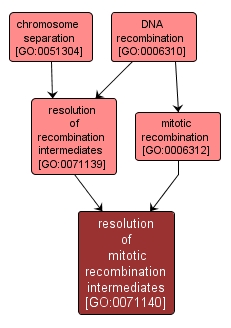GO TERM SUMMARY
|
| Name: |
resolution of mitotic recombination intermediates |
| Acc: |
GO:0071140 |
| Aspect: |
Biological Process |
| Desc: |
The cleavage and rejoining of intermediates, mitotic recombination to produce two intact molecules in which genetic material has been exchanged. |
|

|
INTERACTIVE GO GRAPH
|














